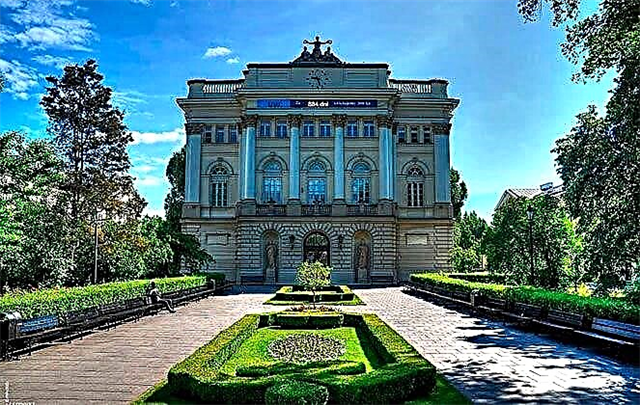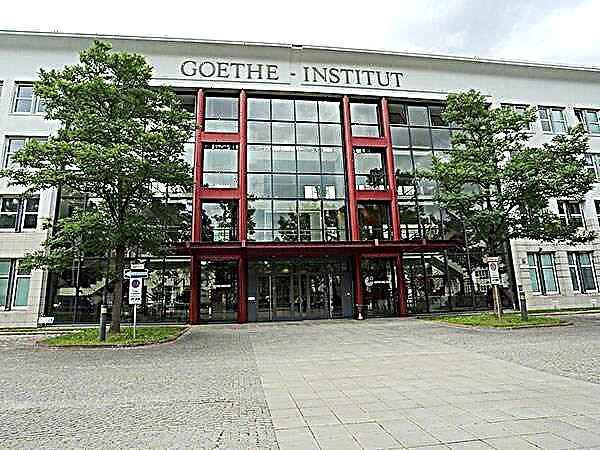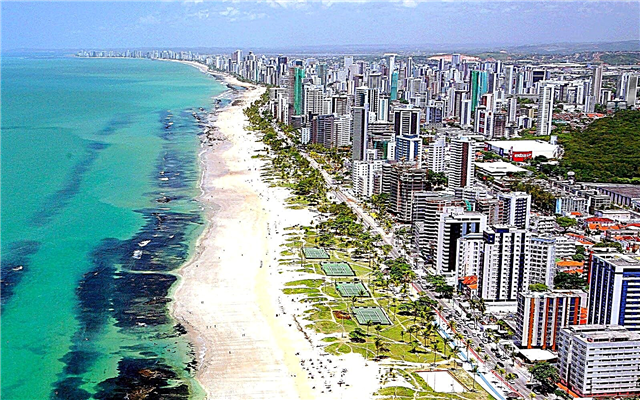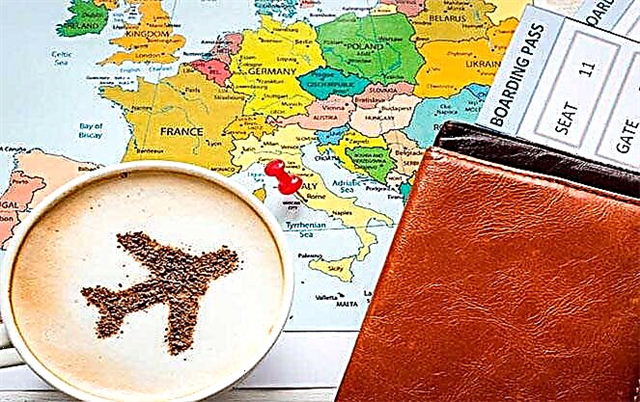Few of the tourists could remain indifferent to Italy. Having tasted all the delights of Italian well-being, it is difficult to resist the temptation to stay in this southern European country forever. But immigration to Italy is not available to everyone: in order to move to permanent residence, definitely good reasons are needed, just the desire to become an Italian is not enough. Today we will take a closer look at the most popular destinations for migration, describe the lengthy process of legalization on Italian territory, and also consider the main costs that a migrant will have to bear.

Six reasons to move to Italy
Italy is not only the coast of five seas at once, rocky mountain ranges, unique architecture and color. Those who decide to leave to live on the Apennine Peninsula choose Italy for completely different reasons. Indeed, this southern European country is able to offer legal migrants much more than tourist attractions.
Let's consider the main advantages:
- EU membership. Perhaps the main plus of moving to Italy is acquiring the status of a resident of the European Union. Migrants residing here legally (for example, with a residence permit) are entitled to visa-free entry and stay in any of the EU countries for a three-month period, as well as crossing the borders of the Schengen area.
- Standard of living. The average salary in Italy is about 1.6 thousand euros. But most of the vacancies with such a salary are low-skilled labor. Qualified specialists earn from 2 thousand euros, which is enough for renting housing, food / clothing, and even for summer vacations. And this is a plus of official immigration - illegal immigrants cannot count on such a salary.
- Employment in other countries. Initially, when moving to Italy, the migrant will not be able to work in other countries. But the situation will change when he acquires the possibility of long-term residence (permanent residence) - from that moment on, the rest of the EU will be open for him, both for permanent residence and for employment.
- Healthcare. According to the WHO, Italy is the leader in the quality and efficiency of medical care in Europe. The public health system is also available to migrants living in the country who are registered with the National Sanitary Service SSN (Servizio sanitario nazionale). At the same time, the overwhelming majority of medical care costs are covered by the state.
- Education. Italy is famous not only for high-quality, but also for relatively cheap public education. The average cost of an annual contract at a public university is only about 500 euros. True, private education is much more expensive and can go up to 25 thousand euros per course.
- Tourist flows. Tourism generates about 12% of Italian GDP, bringing in about $ 10 billion annually. Italy itself is the 5th most popular country in the world with about 58 million tourists every year. All this is fertile ground for the development of small business, which is actively engaged in, including foreigners.
By the way, it is the business of tourists that pushes many of our compatriots to move to Rome, Milan or Venice. However, this is far from the only direction for immigration - let's dwell on them in more detail.
Immigration routes to Italy
Italian law allows to move to Italy without purpose only to those foreigners who are able to secure a comfortable existence without the need to engage in any activity. For the rest, emigration is open only within the framework of the grounds strictly defined by the migration legislation.

The most common living purposes are:
- work for an Italian employer;
- conducting independent commercial activities and entrepreneurship;
- getting education;
- marriage and family reunification;
- investment in the Italian economy;
- request for asylum and obtaining refugee status;
- moving to Italy of wealthy foreigners to live without commercial purposes, and so on.
Let's consider the main directions in more detail.
Employment in Italy
Formal work is one of the most popular relocation options. But not everything is so simple: according to Art. 21 of the Consolidated Text of the Law on Immigration and the Status of Aliens No. 286/1998 of 25.07.1998 (Testo unico delle disposizioni concernenti la disciplina dell'immigrazione e norme sulla condizione dello straniero), the entry of foreign workers is allowed only within the established quota. For example, for 2021, 30,850 quotas are provided, of which 18 thousand are for seasonal workers.
In order to receive a quota, the employer of a foreigner must first agree on it with the migration service and the employment center. To do this, he presents a list of professions for which it is not possible to hire an Italian citizen, and only after that he receives a work permit for a foreigner. On the basis of this permit, a foreigner can obtain a residence permit for work.
Out of quotas, according to Art. 27-quater of Law No. 286/1998, highly qualified specialists with higher education and at least 3 years of work experience can enter and get a job. A special residence permit is issued for them - Blue Card. Find out more in the article "Working in Italy".
Doing business
Italy is interested in attracting foreign entrepreneurs, therefore it allows migrants wishing to do business to live in the country: they, according to Art. 26 of Law No. 286/1998, a residence permit for independent work is issued (Il permesso di soggiorno per lavoro autonomo).

You can get it:
- entrepreneurs, including those carrying out activities as an individual;
- owners and co-owners of shares in the authorized capital of Italian business entities (if the period of the company's economic activity is at least 3 years), as well as persons holding managerial positions in them;
- entrepreneurs developing innovative startups.
A prerequisite is obtaining a certificate from the Chamber of Commerce and Industry with a description of the parameters of the planned economic activity and the available resources for its conduct. In addition, you will need a Nulla Osta permit from the migration authorities, documents confirming the availability of these resources (at least 5 thousand euros), registration documents and other permits and licenses. Find out more about what is business immigration in Italy.
Getting an education
According to Art. 39 of Law No. 286/1998, education in Italy is one of the grounds for temporary residence in Italian territory. However, foreigners from Ukraine, Russia, Belarus and other non-European countries get access to higher education only within the quotas, which are approved annually by each educational institution.
Moving to Italy for residence is possible only after the student is enrolled in a public university or after receiving an invitation from a commercial educational institution.
On their basis, a foreigner receives a student residence permit (Permesso di soggiorno per studio) with the mark studente (student), tirocinante (intern) or alunno (student).
Students have the right to work in their free time, but this does not mean their financial solvency. Therefore, a prerequisite for moving to Italy on this basis is the availability of a place of residence (own or rented apartment), as well as the availability of sufficient funds for their own maintenance (at the rate of at least 28 euros per day), in addition to money for studies, accommodation and travel to the country. All the details in the article "Study in Italy".
Marriage
Marrying foreign nationals with Italians or residents of the country can also be seen as a popular way to move to Italy from scratch. Italian law does not prohibit local people from marrying foreigners, the main condition is the absence of obstacles to marriage (having a spouse, not reaching marriageable age, and so on). This must be documented - a certificate from the consulate.
However, Italy recognizes the legal force of those marriages that are concluded abroad, for example, in the Russian Federation - for the immigration procedure, the place of registration does not matter.

After marriage, in accordance with paragraphs. a) clause 1 of Art. 29 of Law No. 286/1998, the foreign spouse of an Italian has the right to be reunited with him in Italy. But this is possible only when the host country has received a Nulla Osta permit from the migration office, is able to provide a foreigner with housing that meets sanitary standards and sufficient financial support.
But remember: if the marriage is solely for the sole purpose of a foreigner entering Italy (fictitious marriage), no reunification permit will be issued. Find out more about how you get married with an Italian citizen.
Other migration routes
These are just the most popular, but far from all, ways in which you can emigrate. In addition to the reasons described, the law No. 286/1998 considers the following as ways to obtain a residence permit in Italy:
- Family motives. Family reunification in Italy is possible not only with a spouse, but also with:
- a minor unmarried (unmarried) child, including one born out of wedlock, or with a child of a foreign spouse, if his other parent has given his consent;
- dependent children due to their state of health, regardless of their age;
- dependent parents, if they have no other children in the country of origin, or if they have reached the age of 65, have serious health problems and their other children cannot provide them with treatment.
- Investment in Italy. According to Art. 26 bis of Law No. 286/1998, it can be:
- purchase of government bonds in the amount of 2 million euros;
- contribution as a share in the authorized capital of an Italian legal entity of at least 1 million euros, provided that the foreign share remains for at least 2 years;
- contribution as a share in the authorized capital of an Italian company qualified as an "innovative start-up", not less than 500 thousand euros;
- making a gratuitous contribution to a socially significant project in the amount of 1 million euros.
- Choosing Italy as a place of residence. The chosen place of residence (Residenza elettiva) is the basis of immigration for wealthy foreigners. This option is used by foreign retirees, shareholders of enterprises, patrons of art, real estate owners and simply financially independent migrants who have permanent passive income not related to employment, at least 31 thousand euros per year. If the applicant's spouse applies for the PDS together with the applicant, the minimum income is increased by 20%, if with the child - another + 5%. The total minimum income for a family of three is 40 thousand euros.
- Asylum request. Foreigners can apply for asylum in Italy for whom a real threat of persecution at home on political, ethnic, religious, racial, linguistic, national or other discriminatory grounds has been proven. If a foreigner receives asylum, he is granted refugee status, which automatically gives a permit to live and work in Italy. In their rights, they are equal to other migrants. For example, like them, refugees have the right to request permission for family reunification. More information in the article "Refugees".
Please note that the purchase of real estate in Italy, regardless of the cost of housing, is not considered a basis for obtaining a residence permit. However, having your own apartment will undoubtedly be taken into account as a plus for any other reason, for example, when moving to your chosen place of residence.
Immigration procedure
Whatever the final goal of the foreigner and the reasons he has for moving to Italy, the procedural immigration procedure will always consist of several successive stages:
- The emergence of the basis for immigration. For employees, this is the conclusion of an employment contract and obtaining a work permit, for students - passing exams and calling for training, for family reunification - marriage, and so on.
- Registration on this basis of a visa for staying in Italian territory. You can get it at any Italian visa center (with the contacts and addresses of which can be found here) or at the Italian consulate.
- Entry to Italy during the validity of the visa.
- Applying for a temporary residence permit. The basis for a residence permit should be the same purpose for which the visa was issued.
- Preservation of the grounds on which the entry was made and, in connection with this, the extension of the residence permit.
- Obtaining a long-term residence permit (permanent residence), subject to long-term residence in Italian territory.
- Obtaining Italian citizenship.
Please note that the above described the full cycle of immigration, the passage of which will take more than 10 years. It is not at all necessary for a foreigner to go through it completely - to live, it is enough to obtain a temporary residence permit, which, however, significantly restricts rights and requires constant renewal. Let's consider the main stages in more detail.
Visa and documents for obtaining it
The first and, in fact, the main stage of immigration is obtaining an entry visa for the above reasons. Why do we call this stage the main one? If the visa is denied (not for procedural reasons), then the Italian authorities consider the reason for immigration insufficient.
If a visa is obtained, the probability of further registration of a residence permit upon arrival in Italy is 95%. Therefore, this stage must be approached with special attention.
When applying for an entry visa, Russians will need the following documents:
- Visa application. Application forms will differ depending on the category of authorization. Here you can find an example of a completed form for a category C visa. The application form can be completed in Italian by hand. In the case of online registration at the Visa Application Center and entering your personal data on the website, the service will generate an application automatically.
- Proof of residence. Documents of ownership or rental housing will work, including if they are issued to a host party (for example, an employer or family member).
- Medical insurance. It must operate throughout the entire Schengen area for the entire duration of the intended stay. It is most reasonable to get an insurance policy at a visa center. In order to avoid fraud when applying for a policy outside the office, make sure that the insurance agent is authorized.
- Tickets or statement of ticket reservations. If the applicant plans to travel on his own transport, he submits a car registration certificate, car insurance, route and driver's license.
- The original passport (valid for at least three months after the expiration of the visa) and a copy of the page with personal information and photo.
- One color photograph of the applicant in 3x4 cm or 3.5x4.5 cm format, taken within the last six months.
- Russian internal passport. The original + copies of the pages with personal data and registration are submitted.
- Receipt for payment of the consular fee. Its size, as well as other costs, we will discuss below.
- The original consent to the processing of personal data. It is given on a special form that is issued at the visa center. A sample of filling can be found here.
- Documents confirming the availability of sufficient funds to live in Italy (at least for the first time). For example, an account statement.
If, together with an adult, a visa is requested for a child, you will also need:
- birth certificate;
- notarized consent to leave from one of the parents (if the child is leaving with the other) or from both parents (if the child is leaving with a third party), or cross-consent (from one parent to another) in the case of the child leaving for a long time;
- copies of passports of parents giving permission for the child to leave;
- documents confirming relationship with grandmother / grandfather, in case of leaving with them;
- a court decision on the appointment of a guardian and consent to leave from the side of the board of trustees, if a child under guardianship leaves.
Please note that this is only a basic package of documents. Depending on the grounds for entry, additional papers will be required - learn more about them from the article "Visa to Italy".
Temporary and long-term residence permit
Within 8 days after entering the country, regardless of the reason, the foreigner must apply for a temporary residence permit. This should be done by everyone who plans to stay in the country for more than 3 months. The request can be sent:
- the Immigration Bureau of the local prefecture (Sportello Unico per l'Immigrazione);
- to the nearest post office;
- directly to the local police station.
The duration of the residence permit will depend on the grounds for obtaining it; usually it is issued for 1-2 years.
During the entire period of validity of a residence permit, foreigners must inform the migration authorities about a change of place of residence, marital status, work, and so on.
In the future, if by the time the residence permit expires, the circumstances on the basis of which it was received persist, the document may be renewed. Find out how to get a residence permit in Italy.
Having lived with a temporary residence permit for at least 5 years, foreigners have the right to request a long-term permit. It is indefinite and allows you to live and work in Italy at any time, effectively equalizing foreigners and Italians. Moreover, the owners of permanent residence have the right to reside in other EU countries. Read more on how to get permanent residence in Italy.
Italian citizenship
Foreigners who have lived in Italy on the basis of a temporary and long-term residence permit for at least 10 years have the right to apply for Italian citizenship. This period is general and may be shortened depending on the basis of residence.

For example, refugees have the right to request an Italian passport after 5 years of residence. Spouses of Italians can shorten this period even more: they are issued citizenship after 1 year of residence in Italy if they have common children with an Italian or after 2 years without such children.
In any case, a foreigner applying for citizenship must confirm the existence of sufficient income and the legitimacy of the source of its receipt, the availability of housing, no criminal record, and a number of other requirements. You do not need to prove your knowledge of the Italian language and renounce your existing citizenship.
Citizenship issues are under the jurisdiction of the Ministry of the Interior. An application for a passport can be submitted through a special Internet form, having previously paid a mandatory fee of 200 euros. Find out more about how Italian citizenship is processed.
Moving expenses
Moving to Italy will always include a basic list of expenses that an immigrant will have to bear. It will definitely include:
- visa expenses (consular + service fee + other expenses, for example, consultations and legal support);
- transportation costs (ticket purchase);
- living expenses and family support: confirmation of the place of residence, confirmation of the availability of sufficient funds;
- residence permit costs: stamp duty, residence permit processing fee, courier costs and so on;
- the main compulsory expenses are education, medical treatment, investments, and so on.
Let's calculate the minimum cost of moving for each of the reasons for moving:
- For employment: 35/116 euros visa fee (depending on the contract) + 2.9 thousand rubles service fee and courier delivery + at least 25 thousand rubles insurance policy for 1 year (Rosgosstrakh) + 16-25 thousand rubles. rubles air ticket to Rome + personal financial guarantee (at least for 1 month, before the first salary) at least 1-1.2 thousand euros + 116.5 euros costs for obtaining a residence permit.
- For starting a business: 116 euros visa fee + 2.9 thousand rubles air ticket to Rome + at least 5 thousand euros of economic resources + at least 1 thousand euros for renting modest housing + 116.5 euros for the cost of obtaining a residence permit.
- Education: 0/35/50 euros visa fee (depending on the type of study) + 2.9 thousand rubles service fee and courier delivery + at least 4.5 thousand rubles insurance policy for 30 days (Rosgosstrakh) + 16- 25 thousand rubles air ticket to Rome + at least 1 thousand euros for renting modest housing + 10.2 thousand euros of personal financial guarantee (for the first year, at the rate of 28 euros / day) + payment for the training course from 500 to 2.2 thousand . euro per year for a public university and up to 25 thousand euros for a private one + 116.5 euros for the cost of obtaining a residence permit.
- Family reunification: 0/116 euros visa fee (depending on the status of the receiving party) + 2.9 thousand rubles service fee and courier delivery + 16-25 thousand rubles air ticket to Rome + expenses for the transportation of personal belongings + 116.5 euros expenses for obtaining a residence permit.
- Selected place of residence. 116 euros visa fee + 2.9 thousand euros for renting a modest apartment + 31 thousand euros of personal financial guarantee for the applicant or 40 thousand euros for a family of three.
- Asylum request: 16-25 thousand rubles air ticket to Rome, entry into the country when applying for asylum is admissible without a visa, the rest of the costs are borne by the state.
Conclusion
As a conclusion, we will analyze the obvious pros and cons of each of the popular immigration methods:
| Reason for moving | Advantages | disadvantages |
|---|---|---|
| Employment | high salary; official employment; the ability to reissue a residence permit even in case of dismissal. | obtaining a work permit; without knowledge of the language, only low-skilled vacancies; a high percentage of fraud by employers. |
| Doing Business | high profitability of small businesses; developed economy of Italy; the ability to reissue a residence permit on another basis. | proof of economic resources of at least 5 thousand euros; business plan presentation; ignorance of the market and high competition. |
| Educational purposes | relatively low cost of training; the possibility of obtaining grants and scholarships; the right to employment during free time; in case of successful completion of training - obtaining a residence permit for job search. | the need to learn Italian; high personal financial guarantees. |
| Family reunification | the possibility of moving the whole family at once; the right to work and education; low start-up costs; quick acquisition of citizenship, if the host is an Italian citizen. | a limited number of applicants; proof of sufficient housing and income from the sponsor. |
| Selected residence | the right to reside in Italy for no purpose. | without the right to employment; proof of high income and housing. |
| Asylum | does not require financial resources; gives the right to live and work. | accommodation in a center for migrants (at first); a ban on returning to Russia; high refusal rate for asylum. |











